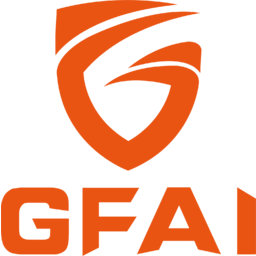
Guardforce AI Co., Limited, an integrated security provider specializing in secured logistics, Artificial Intelligence (AI) and Robot-as-a-Service (RaaS), announced financial results and provided a business update for the year ended December 31, 2022.
Lei (Olivia) Wang, Chairwoman and Chief Executive Officer of Guardforce AI, stated, “2022 was an important year for Guardforce AI. We made significant strides in building our integrated AI and robotics business while strengthening our well-established secured logistics business. Due to the impact of COVID-19 and the shutdown of certain customers’ facilities in the secured logistics business segment during the year, we experienced a slight decrease in revenue of less than 2.0%. Even though the robotic AI segment revenue is still a relatively small percentage of the total revenue, it grew by 245.1% in 2022.
“In our secured logistic business, we made progress in diversifying our services by targeting the retail sector, including food and beverage businesses, which handle large amounts of cash. These businesses are also potential targets for our robotics business. Notably, we secured a 5-year contract with the Bank of Thailand to operate Consolidated Cash Centers (CCCs) in the cities of Ubonratchathani and Phitsanulok in Thailand. Currently, Guardforce AI’s subsidiary operates four CCC centers, covering 31 of Thailand’s 76 provinces. At the beginning of 2023, we secured two long-term contracts with pre-existing clients: a 3-year contract with a renowned retail chain store in Thailand and a 5-year contract with a tollway company, for our secured logistics and cash handling services, further strengthening Guardforce AI’s leading position in Thailand.
Read More: AVANT Named Top Partner Of The Year By Tangoe
“We continue to strengthen our presence in the Asia Pacific region, as we expanded into mainland China, one of the largest and fastest-growing markets for robotics and security solutions. During 2022, we completed three acquisitions in China, providing us with immediate access to thousands of valuable clients. In February 2023, we acquired key assets from Shenzhen Kewei Robot Technology Company Ltd (“Kewei”) in China, which provided us rights to the permanent use of Kewei’s patents and expanded our customer base, including premier Fortune 500 clients. This acquisition further strengthens our capabilities in developing robotic solutions for our customers. As a growing RaaS solution provider, our goal is to capture a significant share of the rapidly growing, multi-billion-dollar RaaS market.
“With an expanded global footprint and growing AI resources, we are expanding our RaaS solutions, such as Artificial Intelligence of Things (AIoT) robot advertising, AI-based support for hotels, and other uses of AI services. We are witnessing particularly strong demand within the tourism industry. Towards that end, we have made significant progress in developing the Guardforce AI Intelligent Cloud Platform (GFAI ICP) and successfully set up three main hubs for the GFAI ICP in Mainland China, the United States, and Hong Kong, each with the ability to manage well over 10,000 robots. We also launched our AIoT Robot Advertising (RA) model and its mobile application, GFAI AD, on the Apple App Store in Asia. The AIoT RA model enables advertisers to publish advertisements on Guardforce AI’s robots and make more informed marketing decisions with data feedback from the GFAI ICP.
“The hospitality industry is an important and major market for our robotic solutions. Towards that end, we partnered with Blue Pin (HK) Limited and launched the Smart AI Hotel solution, initially in Hong Kong, which allows customers to use our concierge robots to make bookings online, check-in, and check-out. Additionally, we partnered with Riversoft Inc. to co-develop a contactless travel robotic solution known as Robot Travel Agency (“RTA”). Our goal for the RTA is to help travelers find exclusive local promotions for restaurants, events, and stores. In 2023, we will continue to enhance and develop our robotic solutions for the hospitality industry and look forward to accelerated growth through our Smart AI Solution and AIoT RA model.
“In summary, we have built a highly scalable business model and expect to resume strong organic revenue growth in 2023, in addition to accelerating the rollout of our RaaS platform through both acquisitions and organic growth strategies,” concluded Ms. Wang.
Financial Overview
Net revenue decreased by $0.68 million, or 1.9%, to $34.5 million for 2022, compared to $35.2 million for 2021. This decrease was primarily due to continued disruptions due to COVID-19 and the shutdown of certain customer facilities to curtail the spread of the coronavirus. As a percentage of revenue, gross profit margin increased from 11.6% for 2021 to 12.3% for 2022, primarily due to cost control initiatives. Operating loss was $16.9 million for 2022, compared to $3.7 million for 2021. The increase reflects higher selling, distribution, and administrative (SD&A) to support the Company’s long-term growth strategy and the provision of obsolete of inventory and impairment of robotics fixed assets recognized in 2022. A majority of the increase in operating loss is additional expenses incurred on setting up new international offices to expand and grow the Company’s robotics business, including staff expenses, rental expenses, marketing expenses, and developing related technologies capabilities. Operating loss included an approximate $0.9 million provision of obsolete inventory and $4.4 million impairment of robotics fixed assets impairment. Net loss was $18.7 million for 2022 compared to $5.5 million for 2021, or net loss per share of $14.97 (post-consolidation) for 2022 compared to $11.90 (post-consolidation) for 2021. As of December 31, 2022, and 2021, the Company had cash and cash equivalents (including restricted cash) of approximately $8.2 million and $15.9 million, respectively.
Read More: Staying Ahead of the Fall: How Sales Teams Can Be Proactive When the Economy Tightens





















